QUARZITI CRISTALLO
EXPLORE
2025-09-22
What are “crystal quartzites”?
Quartzites named “crystal”, while not crystals in the scientific sense of the word, owe this definition to three main factors: appearance, history, and structure.
Appearance: Crystal quartzites stand out for their transparency and brilliance, characteristics reminiscent of natural crystals. It is precisely this visual quality that has led to the use, in a descriptive and non-scientific sense, of the term “crystal”.
History: In ancient times, the Greeks believed that quartz was perpetually frozen ice, and called it “crystal”. This etymological origin contributed to the spread of the term to describe similar materials, such as quartzites.
Structure: From a scientific point of view, a crystal is a solid structure with atoms arranged in an orderly and repetitive way. Quartzite, on the other hand, is an aggregate of minerals —mainly quartz — with a disordered structure, typical of metamorphic rocks.
The name “crystal quartzites”, therefore, has a commercial and non-mineralogical character, which evokes visual similarities with crystals (gloss, brilliance, transparency) without there being a scientific affinity.
Technically, however, “crystal quartzites” are not classifiable as quartzites either.
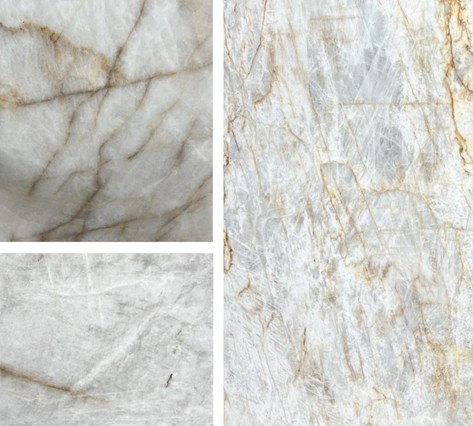
Quartzites, crystals and crystal quartzites: differences and affinities
Quartzites are metamorphic rocks formed by compacted minerals, composed mainly of quartz (over 90%).
Natural crystals in the strict sense, however, are mineral formations with a regular and ordered atomic structure.
However, the term “crystal” is often used more broadly to mean transparent and shiny materials, such as some varieties of quartzites.
Coming from small mines in Brazil, the so-called “crystal quartzites” are extremely rare stones. These are very hard materials, with excellent mechanical characteristics. Their structure is similar to a hive of white crystals, sometimes transparent, enriched by brilliant elements that enhance the internal texture.
Crystal quartzites, despite being natural quartz and not metamorphic rocks, share several characteristics with quartzites that bring their classification closer:
- High percentage of quartz: both quartzite and crystal quartzite are composed largely of quartz, a mineral that gives high hardness and resistance to materials.
- Crystalline structure: both types of material have a crystalline structure that makes them particularly compact and hard, distinguishing them from other less structured rocks.
- Hardness and resistance: their mechanical properties make them suitable for multiple applications, especially in construction and interior design, where durable materials with great aesthetic impact are required.
In summary, despite not being a quartzite in the strict sense, its predominantly quartz composition and its ordered structure make it similar to this category of rocks, justifying the combination and use of the term “crystal quartzite” in the stone sector.
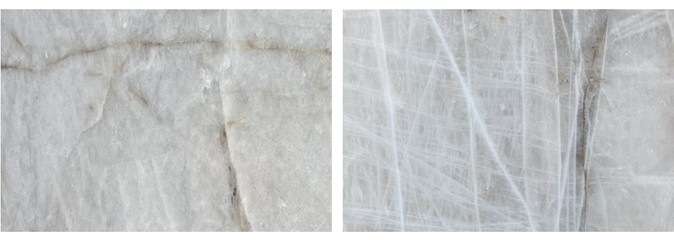
Quartzites and crystals don’t have the same geological origin
It is to the geological formation process that we owe the main difference between “crystal quartzites” and “quartzites”.
Quartzite originates through metamorphism, a geological process that transforms pre-existing rocks into new, more compact and resistant formations under the action of high temperatures and pressures, just like sandstones.
Crystals, on the other hand, are formed through crystallization: a process during which atoms arrange themselves in ordered structures starting from a liquid or a solution.
The technical characteristics of crystal quartzites
Technical analyses on crystal quartzites confirm that it is a milky material, characterized by a homogeneous colour. Microcracks were detected, fairly distributed and non-invasive. A slight opacity, probably due to the presence of amorphous iron, contributes to the visual complexity of this stone.
Below are the main technical characteristics of crystal quartzites:
| Simple compressive strength | (MPa) 63.59 12.56 |
| Tensile strength by bending | (MPa) 19.72 3.40 |
| Amsler wear at 500m | 0.504 0.142 |
| Amsler wear at 1000m | 0.921 0.03 |
Semi-precious materials: beauty and technical performance
Sometimes some crystal quartzites are referred to as “semi-precious materials“. This category includes a wide range of natural stones (marbles and quartzites) which have high aesthetic and technical characteristics, but not at the level of “precious” materials such as gems or rarer minerals.
This is a non-technical definition that describes high-quality natural stones, used for decorative and building applications, which stand out for their beauty, hardness and resistance.
Areas of use of crystal quartzites
The most suitable finishes for crystal quartzites include polishing, honing and brushing finishing. Thanks to their compactness and ease of maintenance, they are ideal for surfaces such as floors, kitchen worktops and counters for residential or commercial environments.
They also have excellent hygienic and antibacterial qualities: this makes them perfect for use in those applications that require high health standards, without requiring any specific treatment.
Backlit natural stones: how to choose them
Crystal quartzites are among those materials (along with onyx and some types of marble) particularly suitable for backlighting, thanks to their natural translucency. The passage of light, in fact, enhances the grain and internal characteristics of the material, creating unique and evocative visual effects.
To choose crystal quartzite slabs to backlight, you will need to consider some factors:
- Translucency: The slabs must be translucent enough to allow light to pass through them.
- Colors: Choose slabs with colors that adapt to the environment and create the desired effect with the backlight.
- Thickness: The thickness of the slab must be adequate to allow backlighting and ensure the stability of the structure. In general, the thickness of the slab must not exceed 2 cm.
- Dimensions: choose slabs with dimensions suitable for the area to be covered or the desired application.
- Cutting and finishing: Cutting and finishing the slab affects the final effect. A precise cut and a glossy or polished finish can enhance the effect of backlighting.
- Type of lighting: you can choose between various types of lighting and LED lights offer more homogeneous lighting and reduced consumption compared to old neon lamps.
TYPES OF CRYSTAL QUARTZITES
Crystal quartzites: the main types available in Alberti & Alberti
All types of crystal quartzite distributed by Alberti & Alberti come from small mines located in Brazil. These are particularly rare materials and therefore not easy to find.
Thanks to the consolidated collaboration with historic suppliers, Alberti & Alberti has good availability and maximum quality of sheets of different types of crystal quartzite.
PINK CRYSTAL
Brazilian crystalline quartzite with a shade of pure crystalline pink.
Type: CRYSTALLINE QUARTZITE
Finishes: POLISHED, HONED
Color: PURE CRYSTALLINE PINK
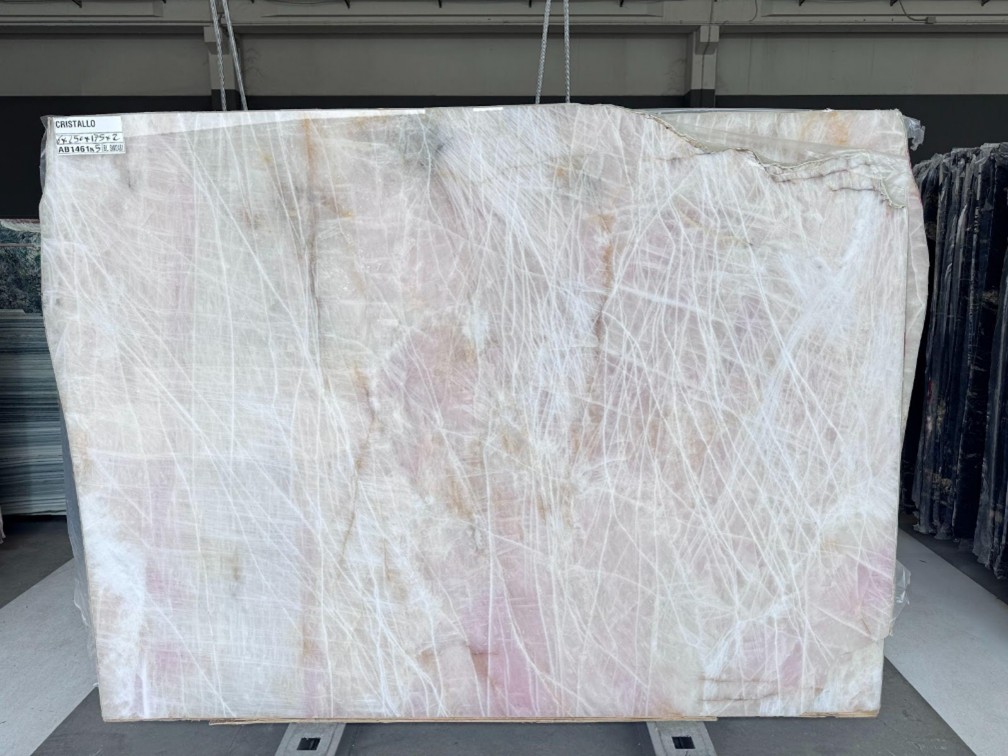
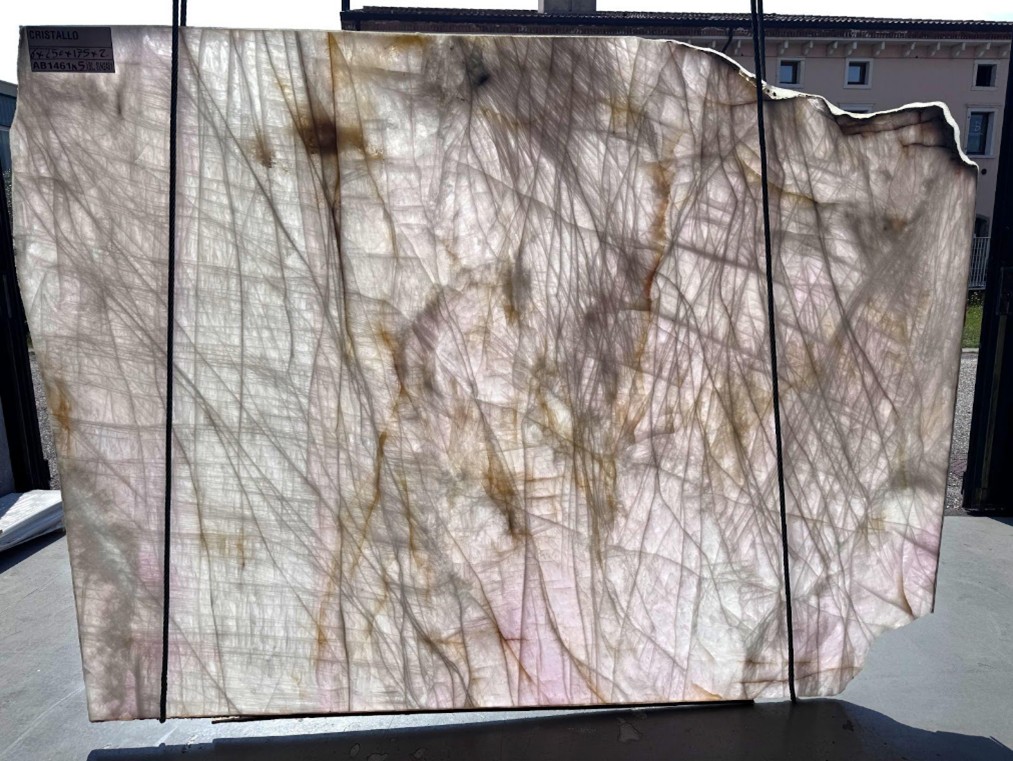
CRYSTAL FROST
Brazilian crystalline quartzite with a shade of pure crystalline white with light coppery yellow veins.
Type: CRYSTALLINE QUARTZITE
Finishes: POLISHED, HONED
Color: PURE CRYSTALLINE WHITE WITH COPPERY YELLOW VEINS
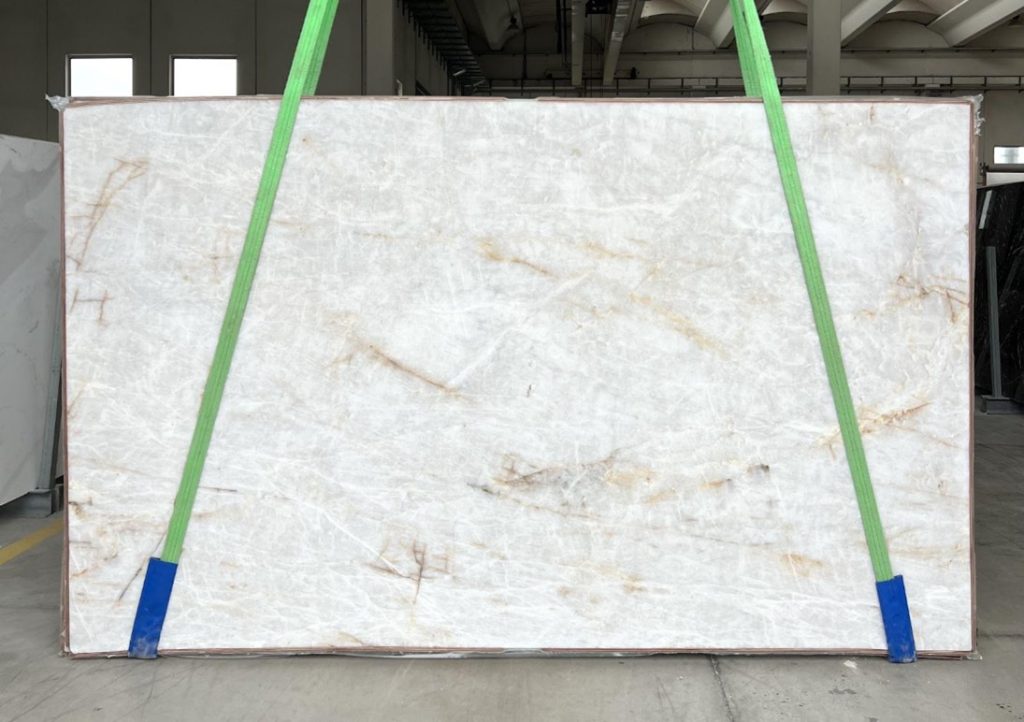
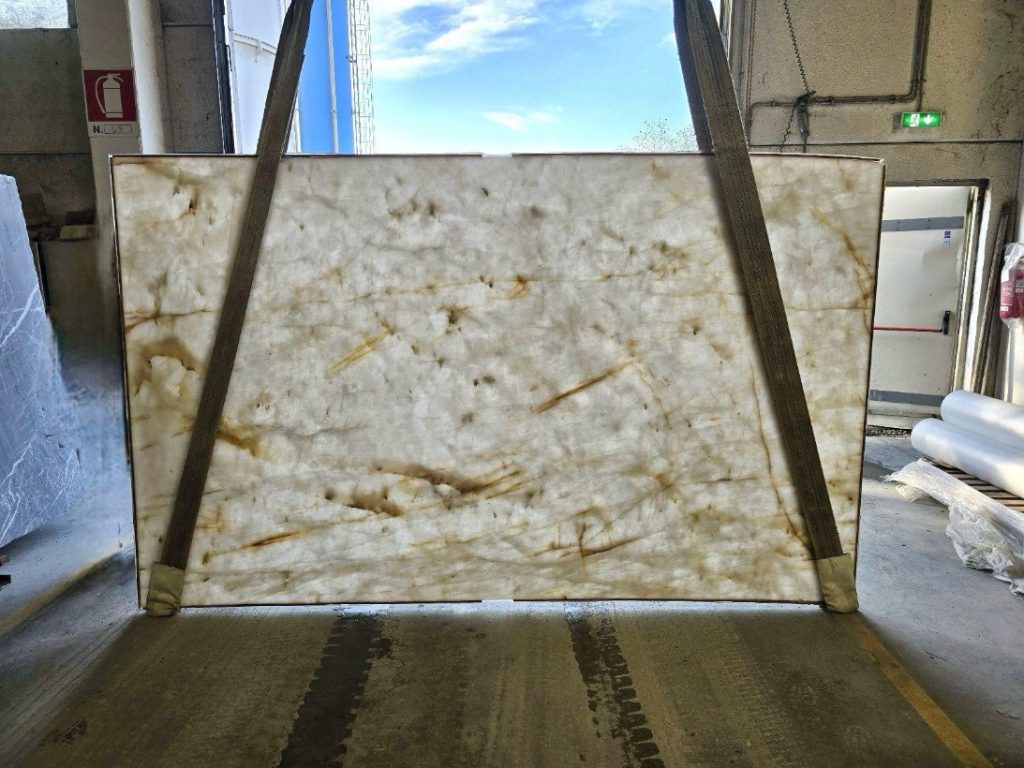
CRYSTAL DOLCE VITA
Brazilian crystalline quartzite in shades of white and pure crystalline gold.
Type: CRYSTALLINE QUARTZITE
Finishes: POLISHED, HONED
Color: WHITE and PURE CRYSTALLINE GOLD
Type: CRYSTALLINE QUARTZITE
Finishes: POLISHED, HONED
Color: WHITE and PURE CRYSTALLINE GOLD
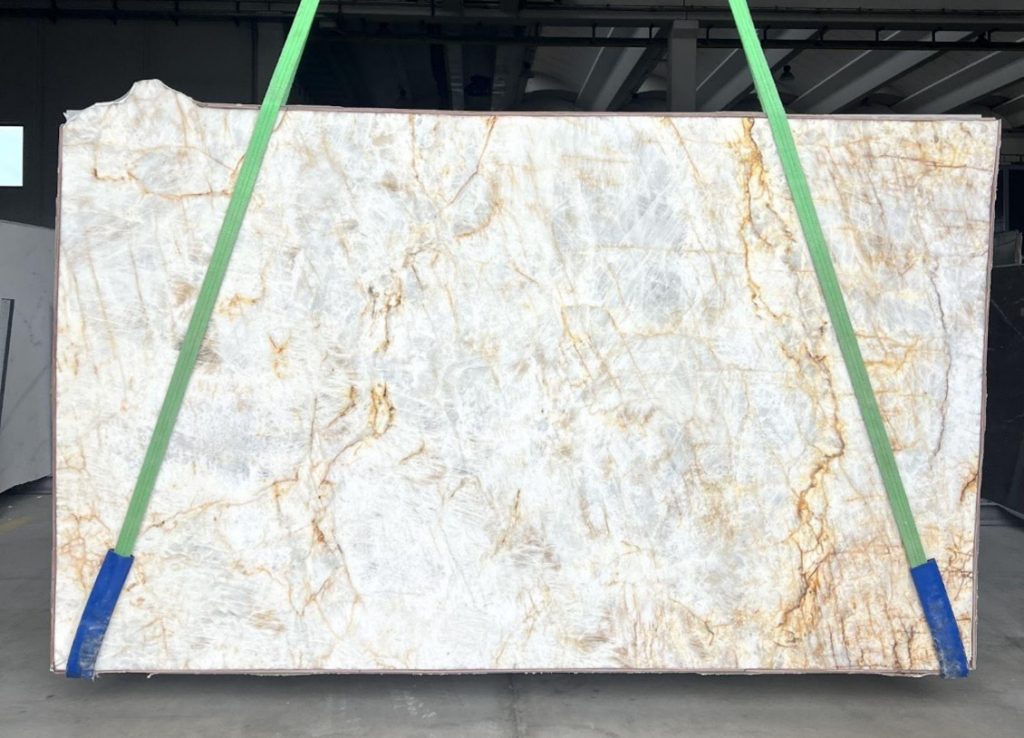
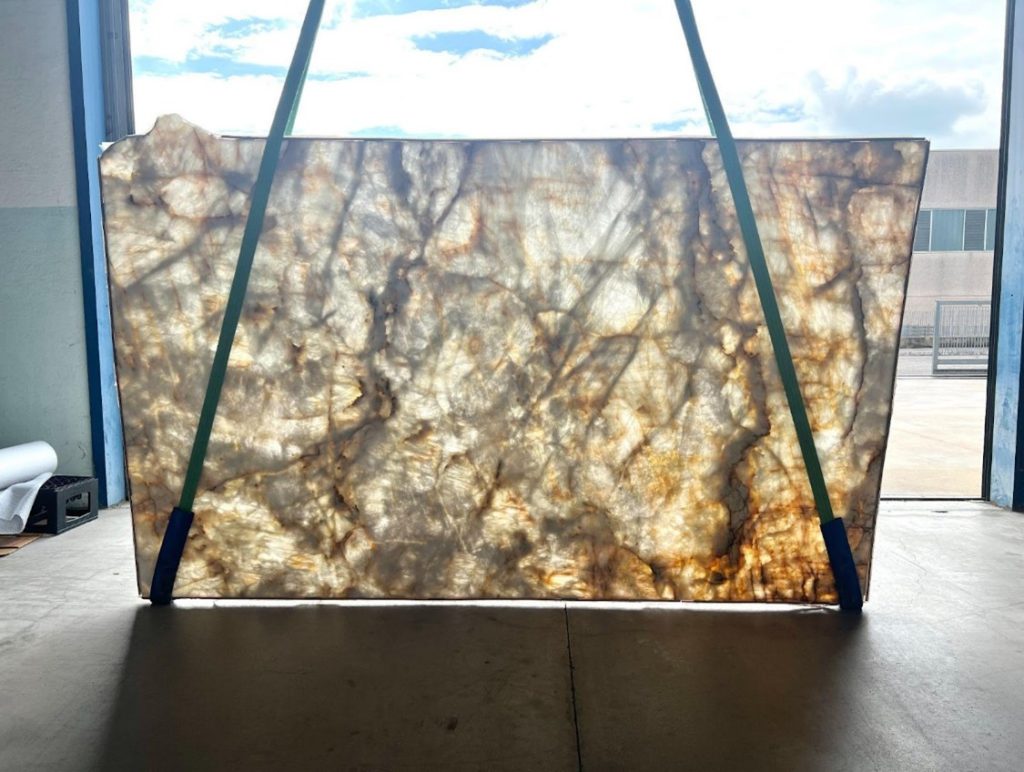
CRYSTAL SUPERIORE
Brazilian crystalline quartzite with a pure crystalline white hue.
Type: CRYSTALLINE QUARTZITE
Finishes: POLISHED, HONED
Color: PURE CRYSTALLINE WHITE
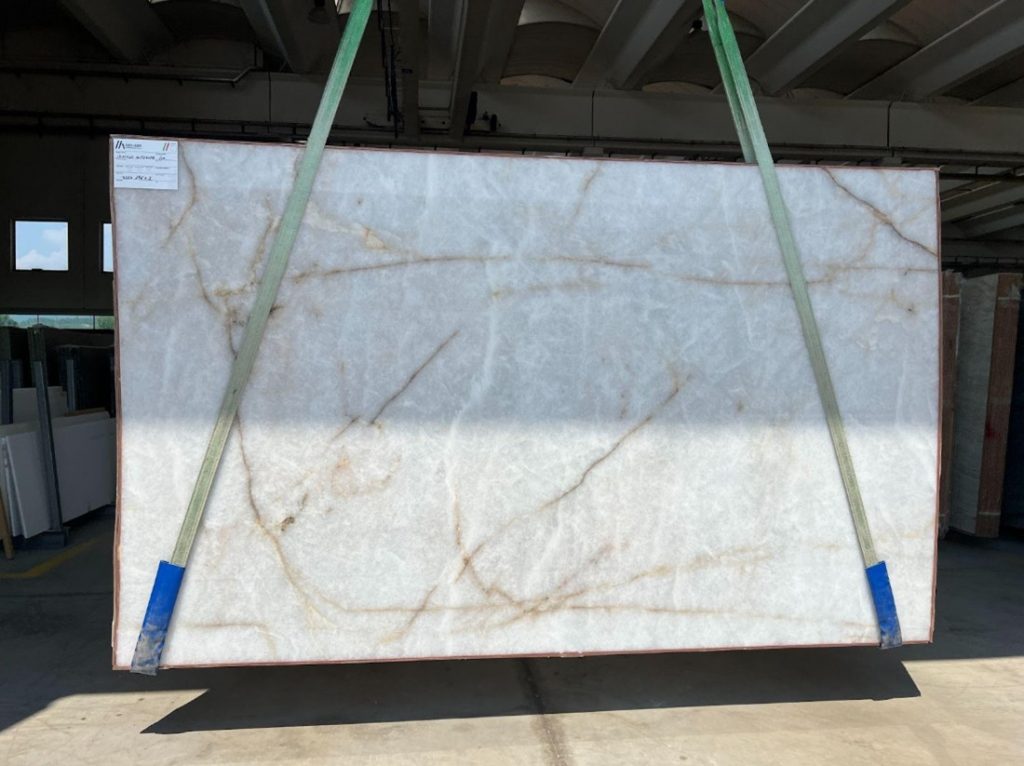
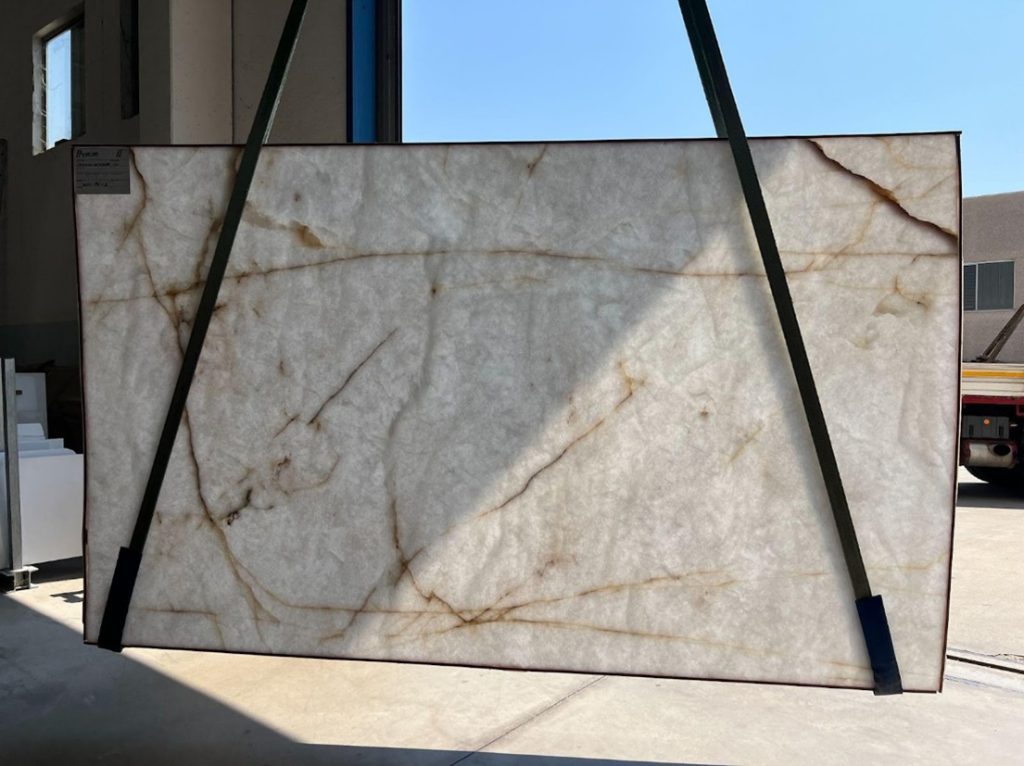
FAQ
- Can crystal quartzites also be used outdoors?
The use of crystals in outdoor environments is generally not recommended. Despite being materials known for their strength and durability, their resin-based composition can be sensitive to prolonged exposure to atmospheric agents, with the risk of deterioration over time. - Is it possible to use crystal quartzites as a worktop in the kitchen?
Yes, crystals represent an excellent choice for making kitchen worktops. Thanks to their high hardness and resistance, typical characteristics of quartzites, they offer a functional and durable surface. Furthermore, they give the kitchen environment an elegant and sophisticated look. - Do crystal quartzites require specific protective treatments?
No, the crystals do not require any additional protective treatment. Their structure already makes them adequately resistant to daily use, without the need for further specific maintenance.
